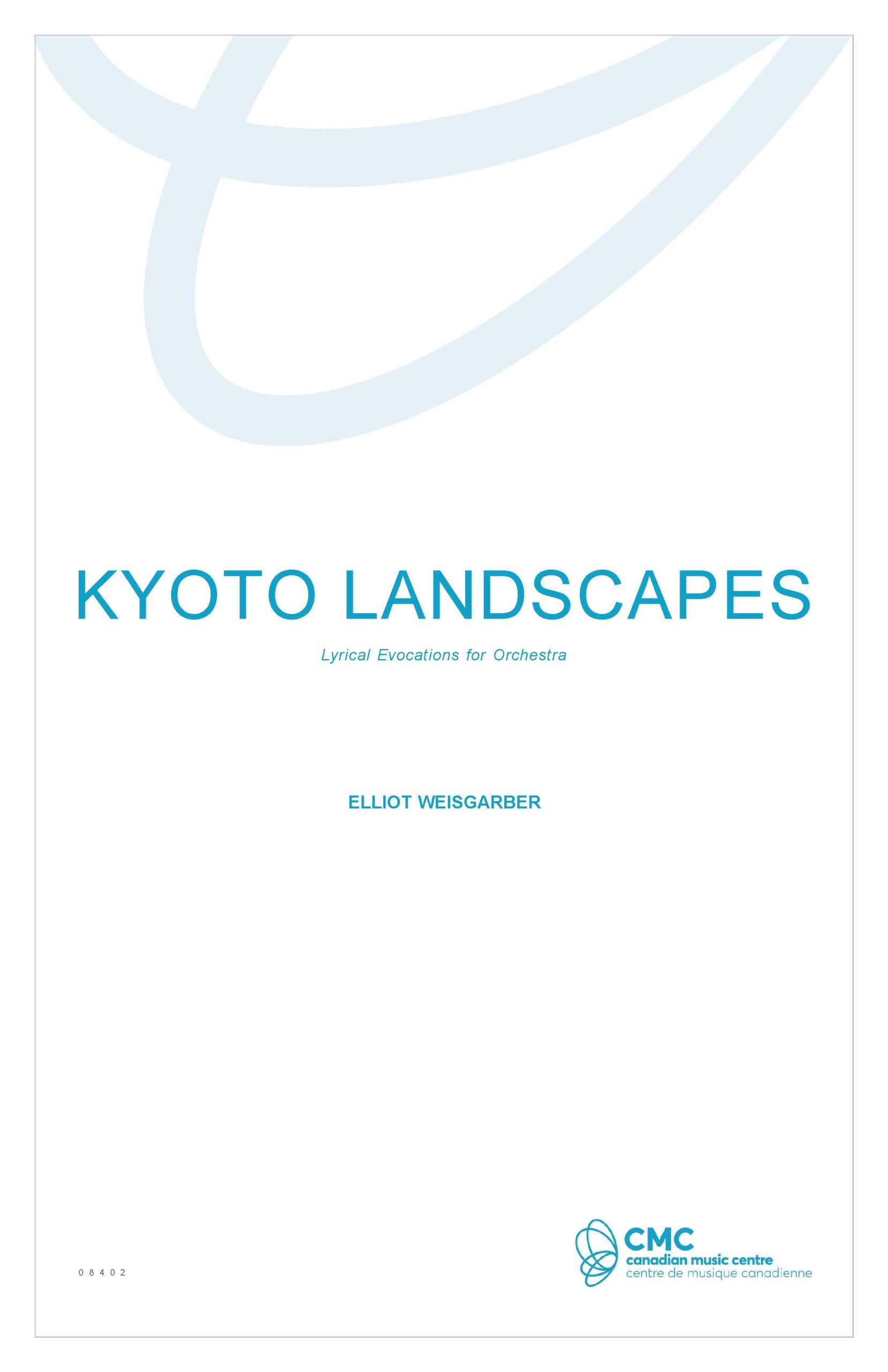A suite of “lyrical evocations,” Kyoto Landscapes receives its inspiration from the Japanese city where Elliot Weisgarber spent much of his period of immersion in Japanese culture during the 1960s and 70s. Fashioned in the form of a folding screen, the work consists of four “panels” representing places that had become dear to the composer’s heart, “places eternally haunted by the faint fragrance of a lost music, washed by a sea of enduring tradition.”
To the four-panelled screen are attached two “bookends,” reconstructions for the modern, western orchestra, of ancient music from the courts of Nara and Heian (Kyoto) known as gagaku (“elegant music”). Such music was part of the massive cultural importation from the Asian continent which began as early as the sixth century.
The opening music, a saibara, is a type of native Japanese folk-song cultivated by the courtiers of Nara and Heian. Traditionally – in an almost modern, “multicultural” sense – one of these indigenous songs would be chosen as the opener for a concert of the more sophisticated, imported gagaku music of the court. Despite this adoption by the court musicians, only six saibara songs out of a once large repertoire are known today. Anatōto, whose opening line forms the text for Kyoto Landscapes’ initial movement, is a saibara praising the splendour of days past. Weisgarber set the text to his own melody written in the traditional saibara style while retaining the ancient melody as a cantus firmus in the solo trumpet. Chōgeishi, the closing music, is an example of classic gagaku of the Kangen-gaku genre employing both winds and strings. Such music was heard at formal indoor concerts and featured the shō, a type of mouth-organ with a uniquely powerful sound. The composition of Chōgeishi is attributed to Minamoto-no-Hiromasa (840 A.D.)
Of the four internal movements:
Yoshida Mountain is a forested hill with a venerable Shinto shrine and several impressive Buddhist temples among its agèd trees. Surrounded now by the noisy city, it can still be a place of mystery and peace. Patterns of Shinto and Buddhist drumming punctuate the tableau while chimes and gongs evoke the magical reverberation of distant temple bells at midnight on the New Year. The lonely sound of a shakuhachi wafts across the cold, night air from the monastery beyond.
Ōhara Village nestles in a valley surrounded by a wall of mountains north of Kyoto. Green and tranquil – rice fields in the gentle rain – people at work – the transient, fading beauty of the spring.
At Arashiyama . . . on the bridge above the quiet river in Kyoto’s northwest – personal thoughts – the music of the night – distant merry-making – memories – the voice of a young woman singing Ringo Oiwake, a popular song from Japan’s far north . . . all merging into the summer night.
Ringo no hanabira ga The apple petals
Kaze ni chitta yo na scatter in the wind
Tsugaru musume wa naita to sa While the daughter of Tsugaru weeps,
Tsurai wakare wa naita to sa weeps at her painful farewell.
Ringo no hanabira ga The apple petals
Kaze ni chitta yo na scatter in the wind.
The Maples of Kiyotaki: a bright sky – flaming crimson in the deep gorge of the river – an autumnal poem of solitude and farewell.
While the composer asserted that “this is western music” in which “Japanese music plays but a minor role,” the reality of experiencing Kyoto Landscapes is sure to illustrate that, for Elliot Weisgarber, the Japanese aesthetic had become intrinsic to his art.
Karen Suzanne Smithson, the composer’s daughter & editor,
adapted from the composer’s notes
March 2023

